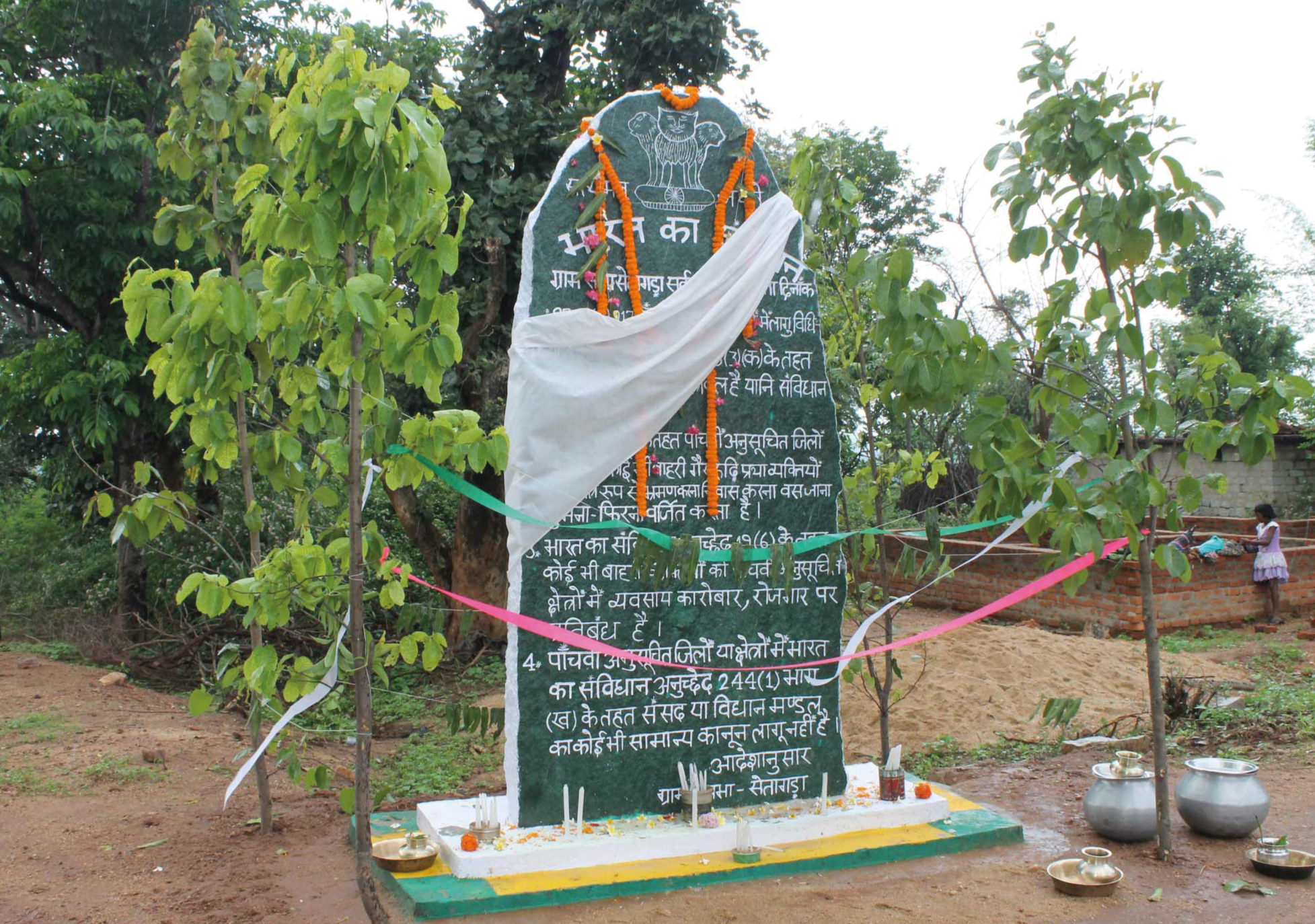The Adivasis of India have been fighting for the protection of their collective right to self- determination, autonomy and identity, and for reclaiming their rights over land, territories and natural resources for centuries. The Pathalgari Movement, a powerful mass movement fighting for these rights that took place in the recent past, was criminalized and crushed by the Indian State because it had directly challenged Indian authorities.
The Adivasis of India have been fighting for the protection of their collective right to self- determination, autonomy and identity, and for reclaiming their rights over land, territories and natural resources for centuries. The Pathalgari Movement, a powerful mass movement fighting for these rights that took place in the recent past, was criminalized and crushed by the Indian State because it had directly challenged Indian authorities.
The word ‘Adivasi‘ combines two Hindi words: Adi and Vasi, which literally translate to original inhabitant, aboriginal or first settler. Adivasis are the first settlers of India –the Indigenous Peoples of the country–. However, constitutionally they are merely classified as Scheduled Tribes and have been guaranteed certain special rights and privileges. There are 744 Adivasi/tribal ethnic groups in India, and out of these, 705 are designated as Scheduled Tribes in 30 States and Union Territories. Several Adivasi ethnic groups haveyet to be designated; when and if they officially become Scheduled Tribes, the percentage of the Adivasi population would increase and thus have a significant and direct impact on the demography and politics of the country.
Unfortunately, the Indian government has repeatedly denied the existence of Adivasis as the Indigenous Peoples of India in front of the United Nations’ Working Group on Indigenous Populations. Nevertheless, on 13 September 2007, the Indian State voted in favour of the United Nations Declaration on the Rights of Indigenous Peoples (UNDRIP), and on 5 January 2011, the Apex Court of India in its statement said that tribal peoples (Scheduled Tribes or Adivasis) are the descendants of the original inhabitants of India and, as a group, are one of the most marginalized and vulnerable communities in the country.
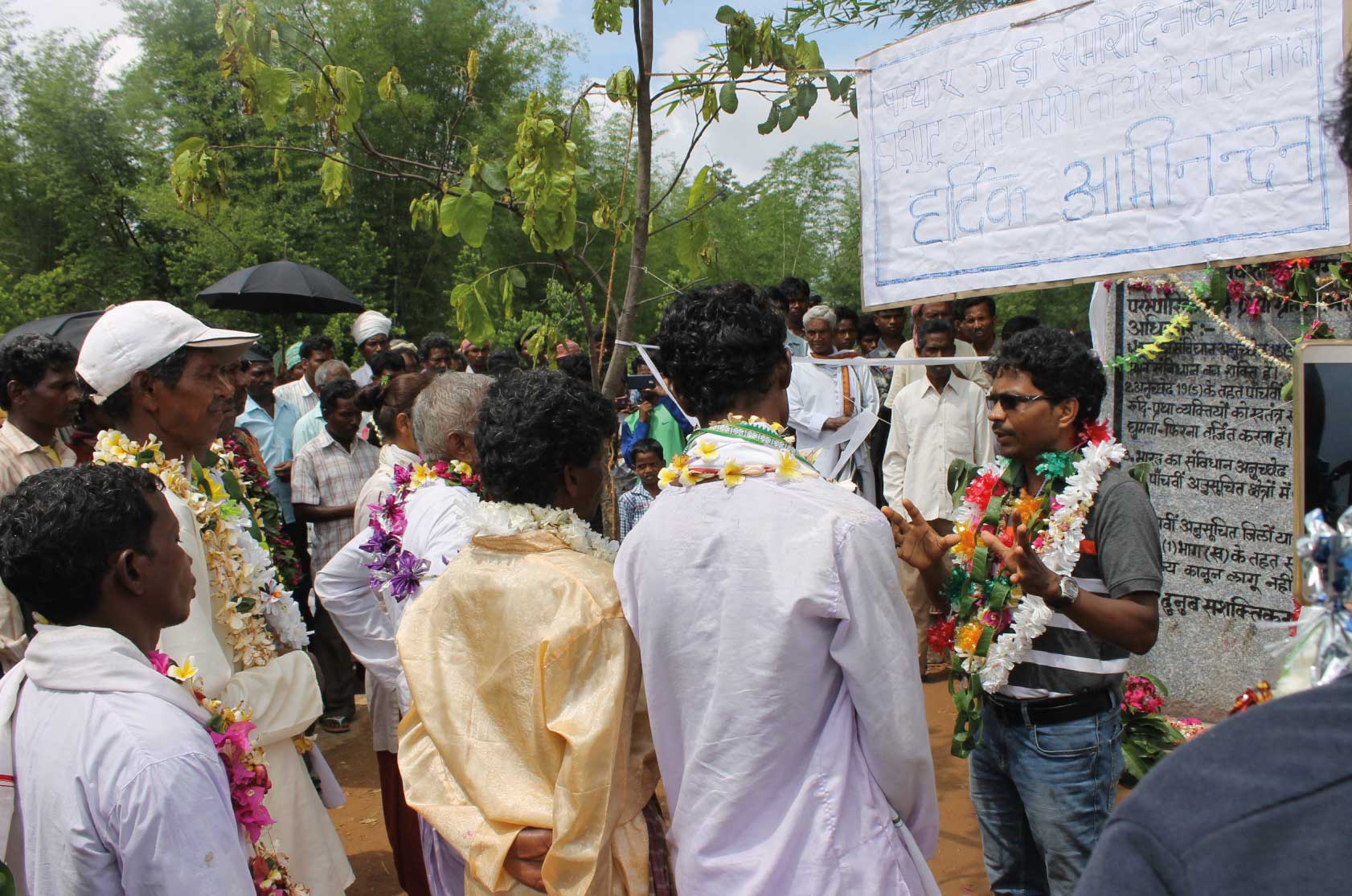
There are 744 tribal ethnic groups in India but some have yet to be recognized as "scheduled" tribes. Photo: Amit Eric Xalxo
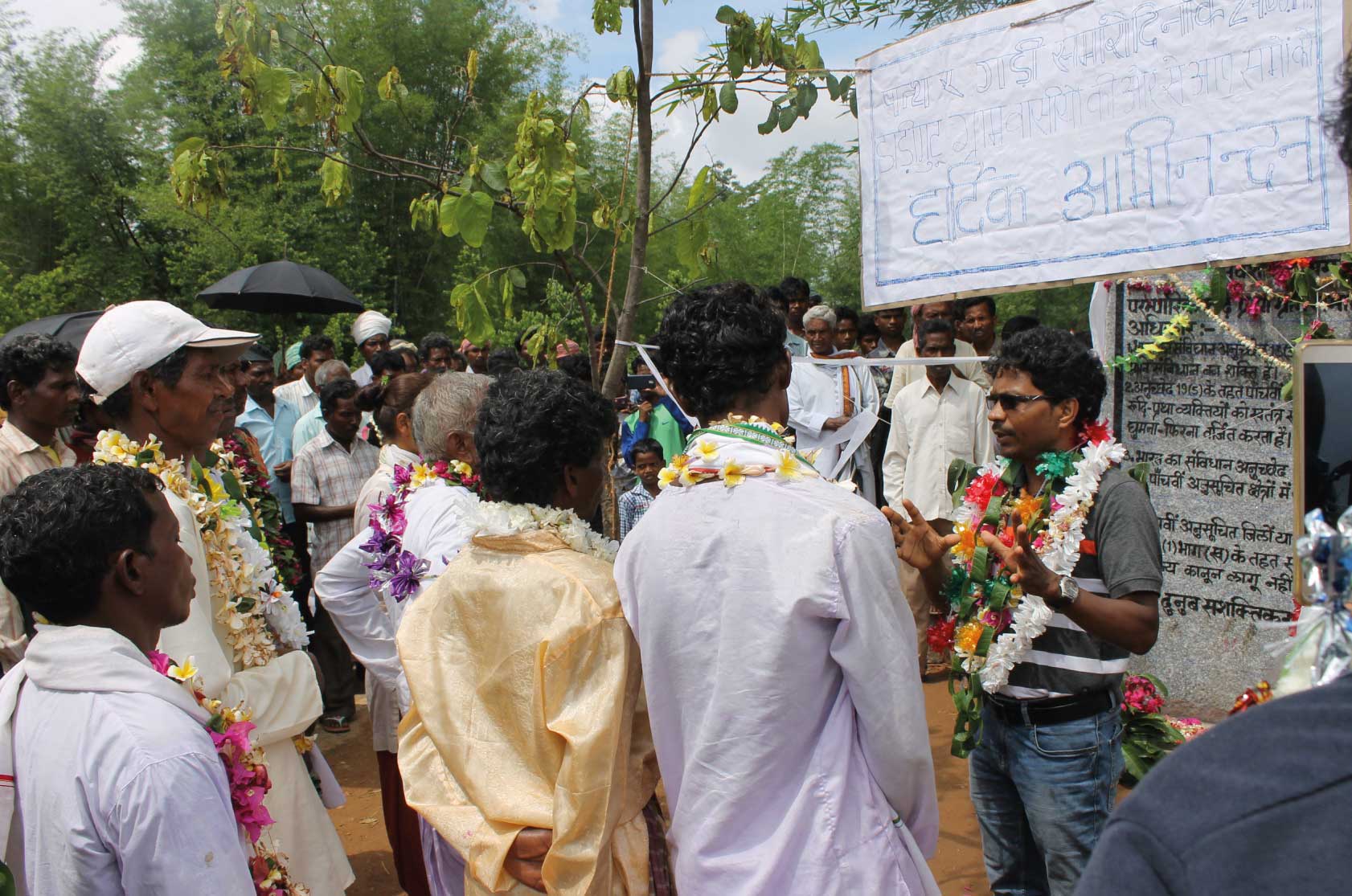
There are 744 tribal ethnic groups in India but some have yet to be recognized as "scheduled" tribes. Photo: Amit Eric Xalxo
The advance on the resources of the Adivasi
According to the 2011 census, Adivasis constitute 8.6 per cent of India’s total population (or 104 million people). The Adivasis have been living in or around forests in a rhythm akin to that of the nature around them. They do not merely depend on the natural resources for their livelihood, but their sole identity, culture, autonomy, conscience, tradition, ethos and existence are based on it. The government’s data suggests that 89.9 per cent of Adivasis still live in rural areas. The basic characteristics of the Adivasi community is that it is casteless, classless, communitarian, based on equality, has a community-based economic system, co-exists with nature, applies consent-based self-rule, operates with dignity and is autonomous.
However, the economic liberalisation, globalization and privatization of India has created terrible impacts in the social fabric, economy, politics, culture and idea of community development in the country. The self-dependent community has been compelled to become government-dependent due to various factors rising out of misguided official policies. The Adivasis have thus been alienated from their land, territory and resources.
The economic liberalisation, globalization and privatization has created terrible impacts in the social fabric, economy, politics, culture and idea of community development in the country.
The economic liberalisation, globalization and privatization has created terrible impacts in the social fabric, economy and politics.
Historically, the Adivasis had traditional ownership rights over their lands, territories and natural resources, but everything changed with the establishment of the Raj (British rule of the Indian subcontinent) and its interference in the matter of country’s natural resources. The British Indian Government enacted various laws to exert control over Adivasi lands, territories and natural resources, which resulted in the marginalization of the Adivasis.
After India’s independence, the situation of Adivasis became even worse. Their lands, forests, water bodies and minerals were snatched, alienating them in the name of development and national interest, and also under the guise of wildlife protection. The government constantly expanded its control over natural resources by enacting numerous legislations, including the Wild Life Protection Act of 1972 and Forest Conservation Act of 1980, that disenfranchised Adivasis in the name of protection, preservation and conservation of forests and wildlife.
According to available data, between 1950 and 2000, 60 million people have been displaced or affected by development projects, such as mega power projects, irrigation projects, power plants, mining projects and cement plants in the country. Out of these, at least 40 per cent are Adivasis and 20 per cent are Dalits (the lowest caste people also known as ‘untouchables’). Some 25 per cent of these displaced were rehabilitated, while the rest have received virtually nothing.
Despite this, local governments are busy luring investors by weakening existing land safeguarding laws and organizing investor summits in federal state capitals. Land banks were also formed and community land (commons), sacred groves and forest lands were enlisted in these land banks without consent of the village councils, which under Indian legislation are the supreme authorities in Adivasi villages. In effect, the existing laws are grossly violated to serve corporate interests.

The situation of the Adivasis worsened after the arrival of the State in their territories. Photo: Amit Eric Xalxo
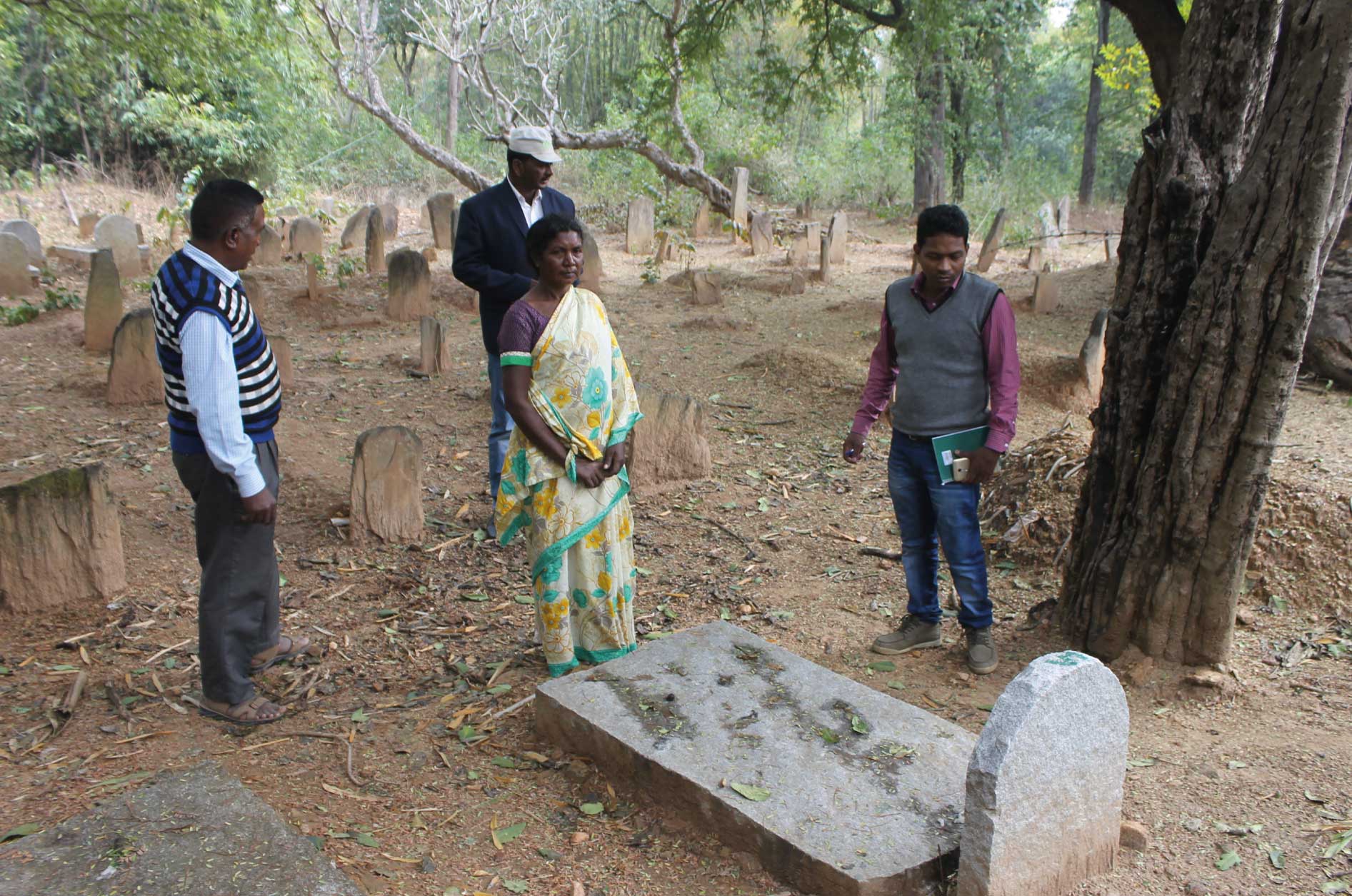
The situation of the Adivasis worsened after the arrival of the State in their territories. Photo: Amit Eric Xalxo
The use of stone slabs as a political message
In India, Adivasis have three types of rights: constitutional, legal and traditional rights. The right to self-determination, recognized by the Indian constitution and a wide array of other laws and court judgements, is one of the most important rights they have enjoyed for centuries. However, when implemented, Adivasis find themselves terrorized, suppressed and criminalised by the modern Indian State. The Indian State has failed miserably in enforcing the constitutional provisions and other pieces of legislation that protect Adivasis, as well as the UNDRIP.
The Adivasis who have been fighting to protect their identity, autonomy, culture, languages, lands, territory and resources, are branded as Naxals (leftists rebels), anti-national and anti- development, and as a result are criminalized, being falsely implicated in crimes, tortured and imprisoned – yheir right to freedom of expression compromised.
The Pathalgari (also spelled Pathalgadi Movement) is an autonomous self-determination resistance movement of the Munda Adivasis of Khunti district in Jharkhand that was formed to reclaim Indigenous Peoples' collective rights over their lands, territories, and natural resources. Presently, the movement has spread across the major central Indian states of Jharkhand, Odisha, Chhattisgarh and Madhya Pradesh.
The Pathalgari is an autonomous self-determination resistance movement of the Munda Adivasis that was formed to reclaim Indigenous Peoples' collective rights over their lands, territories, and natural resources.
The Pathalgari is an autonomous self-determination resistance movement of the Munda Adivasis.
Etymologically, Pathalgari means ‘erection of a stone slab’, where patha’ is a ‘stone’ and gadi means ‘to erect it or fix it on the ground’. Thus, Pathalgari is an erected stone slab symbolising Adivasi customary rights, practices, beliefs and culture. Commonly, an entire village community is involved in erecting stone slabs in the village ceremoniously for different purposes, such as the preservation of the existence of ancestors, demarcation of a village boundary, displaying the history of the settlement for future generations, showing the existence of generations living on the land, and for memorialising a special event.
The beginning of using tomb stones to convey political messages can be traced back to the 19 th century. In 1880, when British rulers asked the Munda Adivasis of Khunti to prove their ownership over the land they cultivated, they carried a huge tomb stone from Khunti to Kolkata and submitted that as evidence to the British authority.
In recent decades, Pathalgari came into the limelight when the Provisions of the Panchayats (Extension to Scheduled Areas) Act (PESA 1996) was enforced. Former Indian Administrative Service officer BD Sharma and former Indian Police Service officer Bandi Oraon started the practice of erecting stone plaques in villages with provisions of the Act inscribed on it. This was done to make Adivasis aware about their legal and constitutional safeguards.
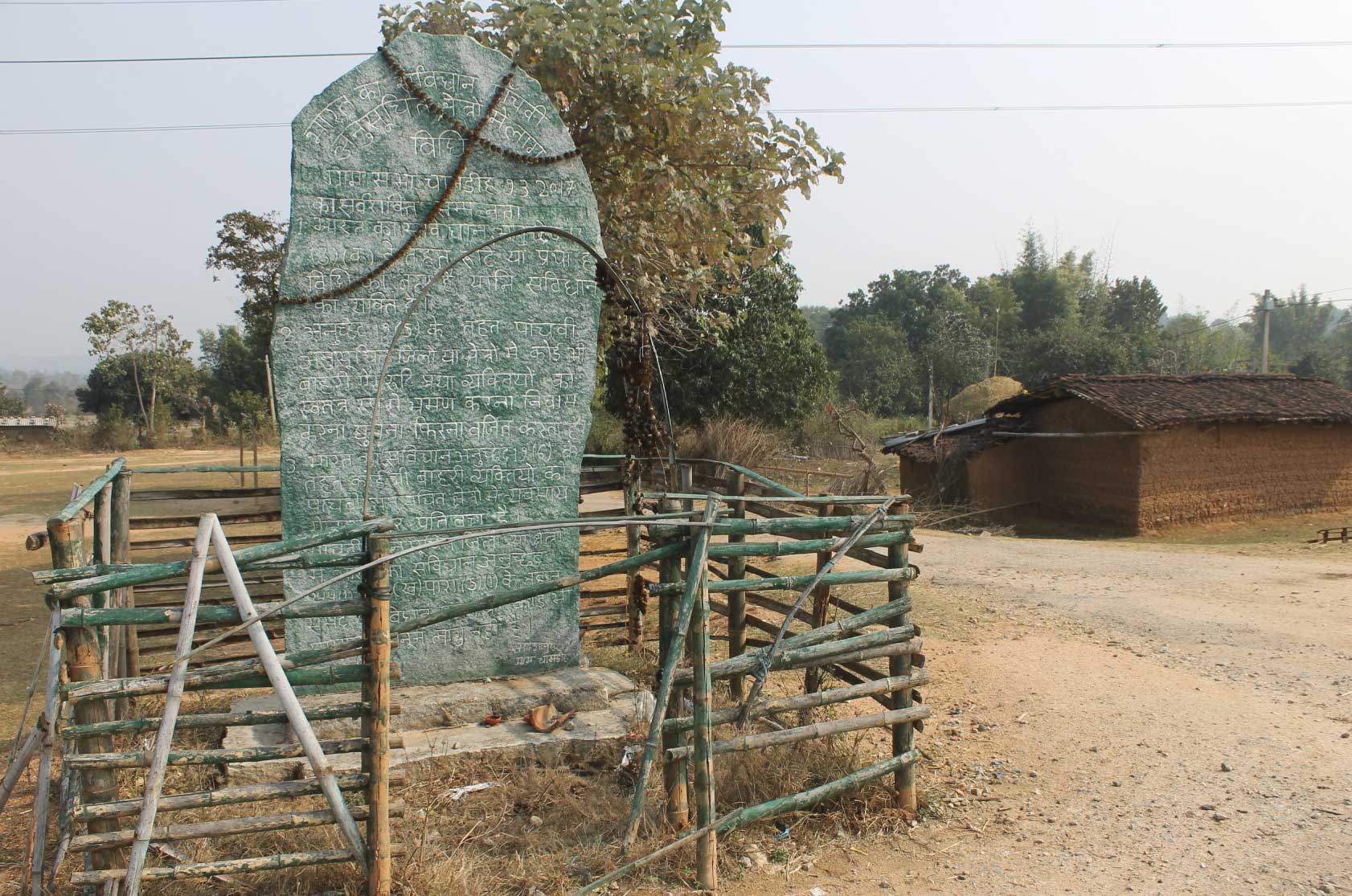
Pathalgari means ‘erection of a stone slab’, where patha’ is a ‘stone’ and gadi means ‘to erect it or fix it on the ground’. Photo: Gladson Dungdung
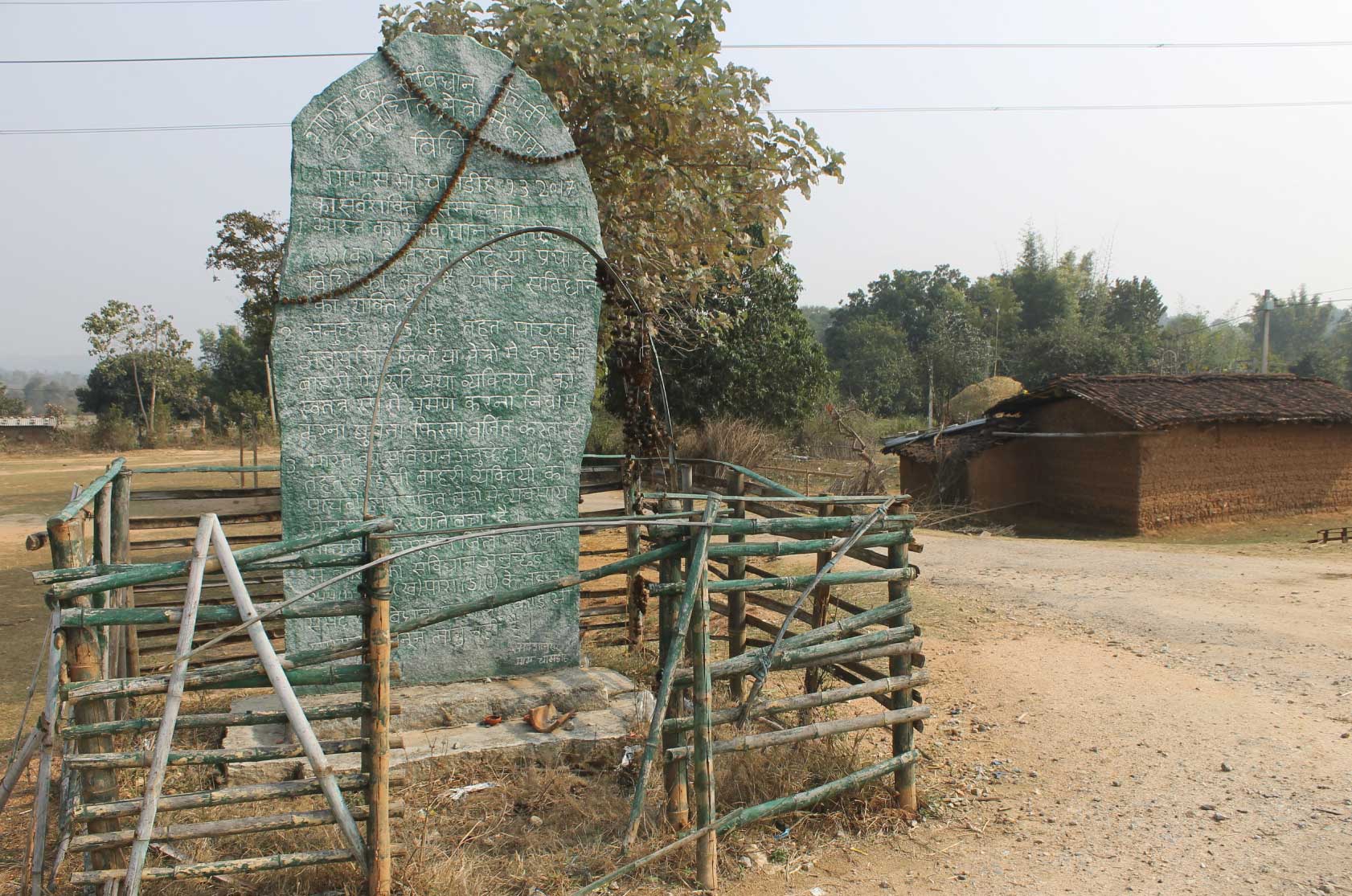
Pathalgari means ‘erection of a stone slab’, where patha’ is a ‘stone’ and gadi means ‘to erect it or fix it on the ground’. Photo: Gladson Dungdung
A new chapter of the Pathalgari Movement
In 2017, while mobilizing the Munda Adivasi community of the Khunti region of Jharkhand State for the reclamation of their collective rights over their lands, territories and natural resources, the leaders of organisation Adivasi Mahasabha understood the importance of the cultural Pathalgari symbol for the community and strategically used it for the mass movement.
The movement was formally launched on 9 February of the same year in Bhandra village as a protest against land law amendments enacted by the Jharkhand state government. The amendments would allow for the commercial use of Adivasi land, acquisition of agricultural land for non-agriculture purposes and prohibition of land transfer through compensation. The first two amendments would have adverse effects on the Adivasis of Jharkhand precisely because the state government has enlisted 2.1 million acres of so-called government land in the land bank, including sacred groves, village paths, playgrounds, graveyards, forest lands, hills, etc. The state government also organized a Global Investors Summit and signed 210 new Memoranda of Understanding with corporate houses.
The leaders of organisation Adivasi Mahasabha understood the importance of the cultural Pathalgari symbol for the community and strategically used it for the mass movement.
The leaders of organisation Adivasi Mahasabha understood the importance of the cultural Pathalgari symbol for the community.
These events triggered the Pathalgari Movement and stone plaques were installed in more than 200 villages claiming the supreme authority of traditional village councils. Drawing from the custom, they display messages on large stone slabs, painted green and white, measuring about 15 feet by 4 feet. The movement seeks to replace the power of the central and state governments with that of the local Gram Sabha (village council). The message they display include excerpts from the Indian Constitution and Supreme Court judgements, as well afters warnings to outsiders that inform them not to enter the villages without permission of the village headman.
The movement declared full non-cooperation against the Indian State. They issued identity cards to villagers, opened their own schools with different syllabi, and established their own bank and traditional health care system. They also deployed traditional guards (dressed in traditional outfits and armed with bows & arrows) in every village, whose duty was to prevent outsiders from entering their villages without prior permission from the village headmen.
Villages were barricaded with bamboo fences and check posts were erected. When government authorities forcefully entered villages by breaking through the barricades, they –senior administrative officers, police and paramilitary forces– were captured and kept in villagers’ custody.
After a year, when the movement become a serious threat to authorities, the government declared it as unconstitutional, anti-state and anti-national, and crushed it with the use of police and paramilitary forces. The movement was defamed not only by the Indian State, but also by the ruling (on the federal level) right wing BJP (Bharatiya Janata Party) government, national and regional media, right wing civil society organisations, and right wing Adivasi organisations. Consequently, this led to mass repressions of Adivasis in the entire region.
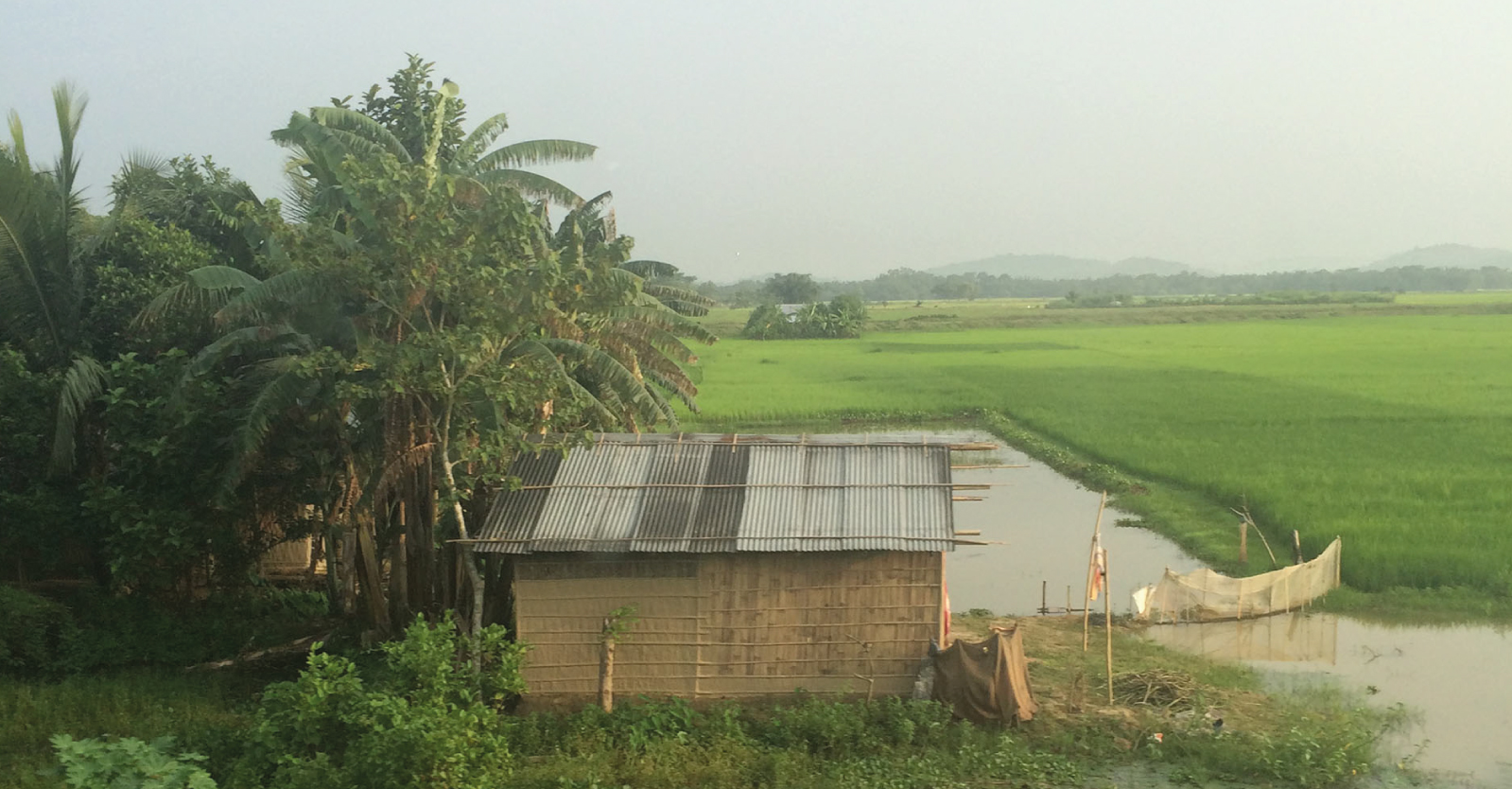
The movement has started its own institutions, schools, health systems, guards and even a bank. Photo: IWGIA
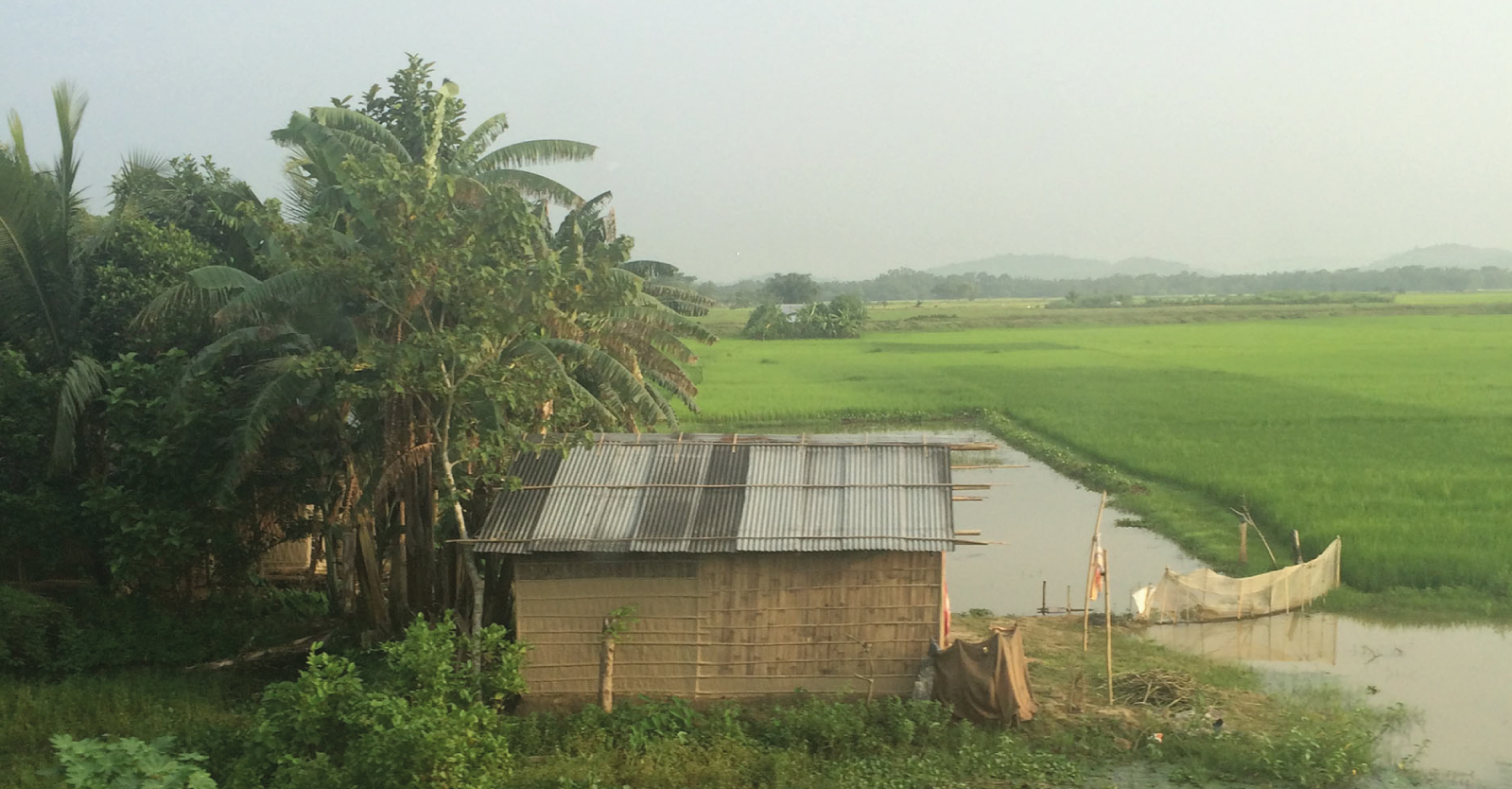
The movement has started its own institutions, schools, health systems, guards and even a bank. Photo: IWGIA
From criminalization to hope
This led to dire consequences. Sedition cases were filed against more than 10,000 Adivasis, 115 were imprisoned, one villager was brutally killed by police, and more than 3,000 villages were declared abandoned after villagers fled in fear of being arrested, some leaving their families to fend for their own survival. Nearly 25 permanent military camps were established, mostly on school premises, in the entire region without consent of the village councils.
The Pathalgari Movement was thus one of the major issues discussed in the last Assembly Election of Jharkhand held in December 2019. The alliance of opposition groups led by the present Chief Minister Hemant Soren had strongly raised the issue during the election campaign where he promised to drop all the charges if the alliance came to power in the state, which helped him to secure a comfortable majority for the alliance. On 29 December 2019, Soren, right after taking the oath as Chief Minister, kept his campaign promise and announced the withdrawal of all Pathalgari cases, which was legitimized in his first cabinet meeting. The withdrawal process began just one month after the cabinet’s decision, but unfortunately, even today, two years since the decision was announced it has not been translated into action.
The Pathalgari Movement is a 21 st century Adivasi revolution for the protection of their collective right to self-determination, autonomy, land, territories and natural resources. It was completely misunderstood by the Indian State and, as a result, was defamed and crushed. However, it has also given a new ray of hope to the Adivasis, demonstrating they can still challenge the mighty Inidian State with the power of their unity and traditional self-governance. If the Jharkhand State government is to re-establish the Adivasis’ trust and support, it has to withdraw all the Pathalgari cases, as they are legally bound to do, and must protect the constitutional, legal and traditional rights of the Adivasis.
